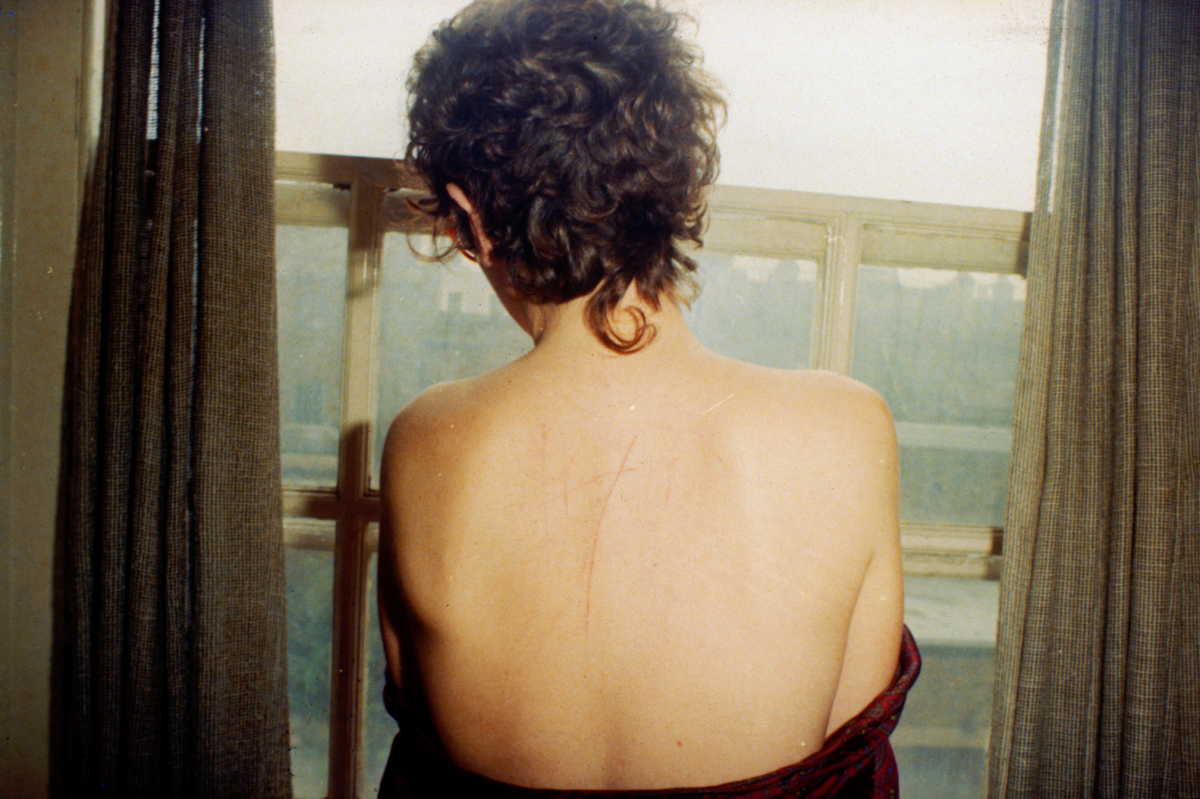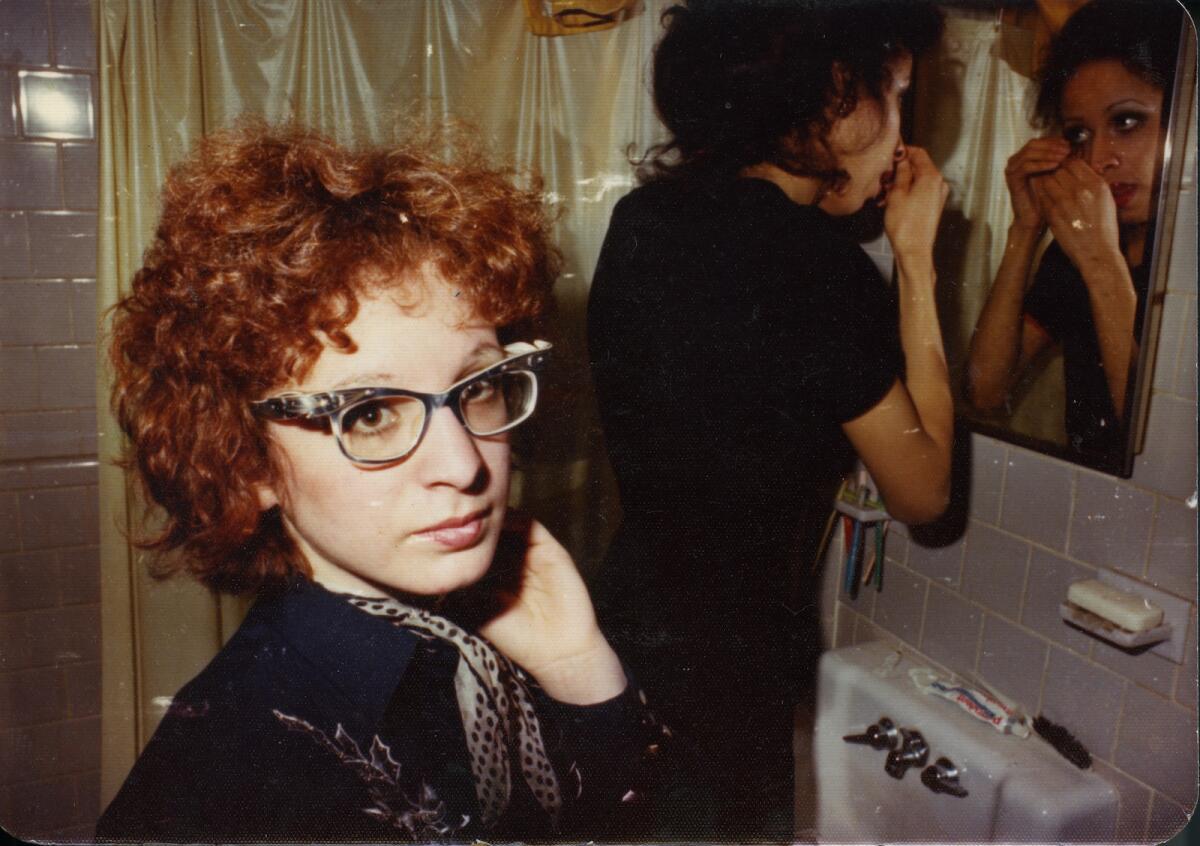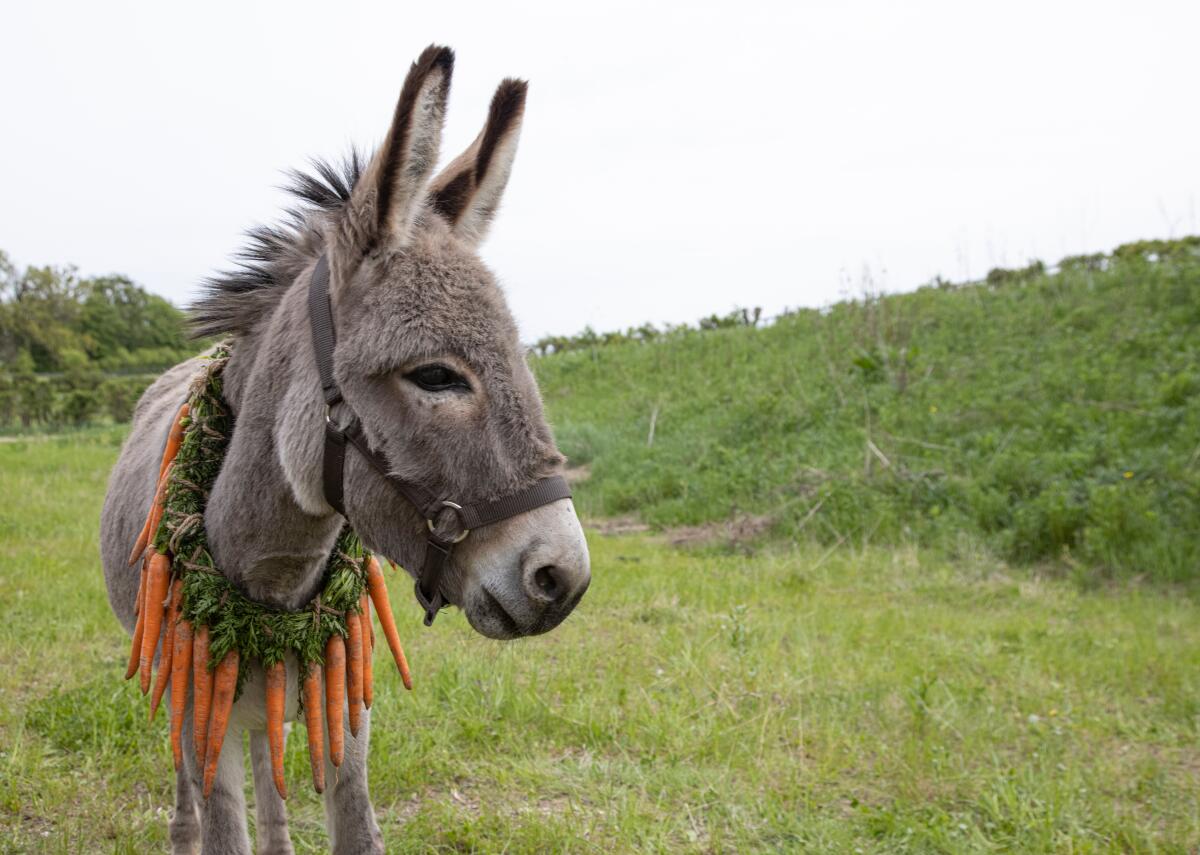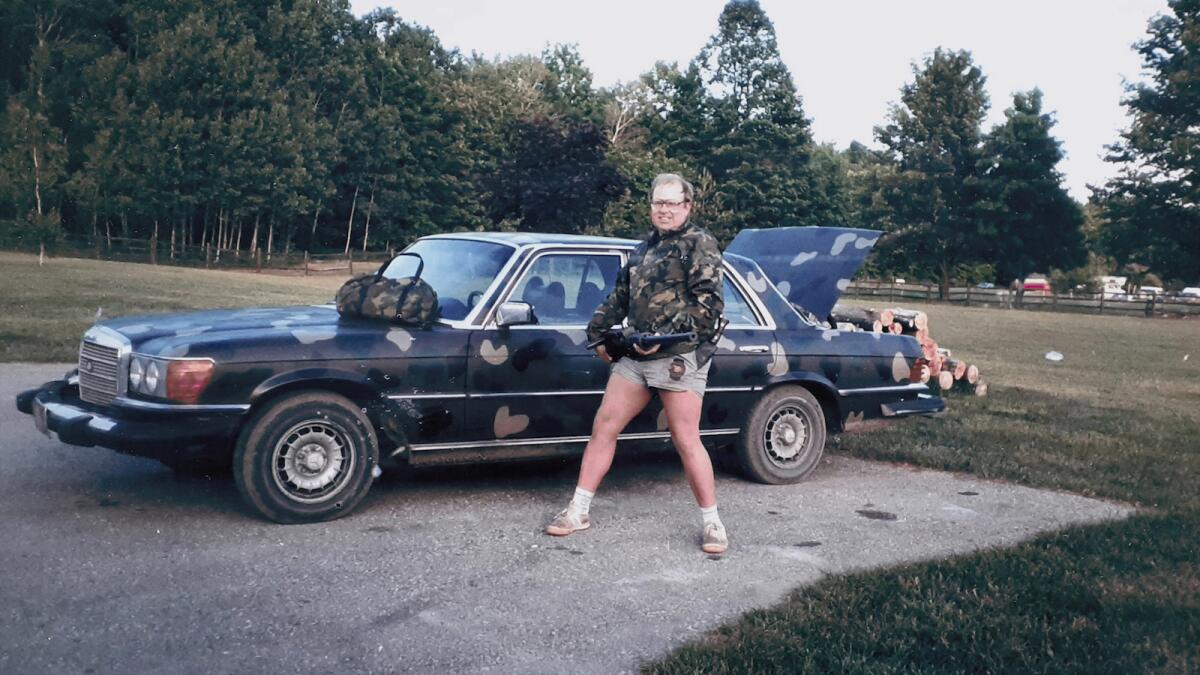Portrait of artist and activism in ‘All the Beauty and the Bloodshed’

- Share via
Hello! I’m Mark Olsen. Welcome to another edition of your regular field guide to a world of Only Good Movies.
Only good movies
Get the Indie Focus newsletter, Mark Olsen's weekly guide to the world of cinema.
You may occasionally receive promotional content from the Los Angeles Times.
This week, the British film magazine Sight and Sound revealed the results of its latest once-a-decade poll of the greatest films of all time, surveying more than 1,600 critics, programmers, curators, academics and archivists for their top-10 lists. For the first time, the winner was Chantal Akerman’s 1975 film, “Jeanne Dielman, 23 quai du commerce, 1080 Bruxelles.” Alfred Hitchcock’s “Vertigo,” which topped the poll in 2012, moved to the No. 2 spot, while Orson Welles’ “Citizen Kane,” winner of the five polls before that, came in at No. 3. “Jeanne Dielman” is streaming on HBO Max.
A companion poll of 480 directors placed Stanley Kubrick’s “2001: A Space Odyssey” in the top spot, having placed sixth on the other list.
New restorations at the academy. The Academy Museum launched its first series of films newly preserved and restored by the Academy Film Archive with a program titled “Present Past: A Celebration of Film Preservation” that runs through Dec. 19. It’s an eclectic group of films, including Cauleen Smith’s 1998 “Drylongso,” Thomas Ince and Charles Giblyn’s 1916 “Peggy,” John Huston’s 1961 “The Misfits,” Roger Corman’s 1964 “The Masque of the Red Death,” Martha Coolidge’s 1976 “Not a Pretty Picture,” Timothy Carey’s 1962 “The World’s Greatest Sinner” and Andrei Tarkovsky’s 1983 “Nostalghia.” Joe Dante and Jon Davison will also present their epic 1968 B-movie supercut compilation, “The Movie Orgy.”
End credits of “Tár,” explained. As year-end awards and top-10 lists start rolling out, one movie sure to be talked about is Todd Field’s “Tár.” I have heard from a number of people asking why the end credits came at the beginning of the movie. (When I saw the film at a public showing, the audience went from slight confusion to mild annoyance to something like anger in just a few moments.)
I recently got Field on the phone and asked him about it. After a few moments of saying he wasn’t sure how much he wanted to explain, he proceeded to give an in-depth, multipoint account of his reasons for the unusual move and even how his feelings about what it means have evolved. Eventually, he noted, “You know, I probably said too much about it already.”
Enjoying this newsletter? Consider subscribing to the Los Angeles Times
Your support helps us deliver the news that matters most. Become a subscriber.
‘All the Beauty and the Bloodshed’
Directed by Laura Poitras, “All the Beauty and the Bloodshed” is both something unexpected from the Oscar-winning documentary filmmaker and something completely in line with her other work. A portrait of photographer Nan Goldin, known for her bracingly intimate work like “The Ballad of Sexual Dependency,” the film follows her as she mounts a campaign to get the Sackler family, who profited from the OxyContin addiction crisis, removed from their philanthropic positions with museums and institutions in the art world. The movie won the Golden Lion at the Venice Film Festival and Friday was named best nonfiction film by the New York Film Critics Circle. It is in theaters now.
For The Times, Robert Abele wrote, “Late in ‘All the Beauty and the Bloodshed’ — a title whose origin, when revealed, carries unbearable poignancy — there’s a scene in which Goldin takes part in a Zoom hearing that requires the Sacklers, looking for a settlement, to hear and view in real time the testimony of OxyContin addiction victims. When Goldin’s turn comes, the camera captures a PAIN colleague supportively gripping this dedicated artist/activist’s trembling hand. It feels like a moment she would want for her collection of cherished memories: a spontaneous image of pain, perseverance, righteous expression, and the tender gesture that says, ‘I’m with you.’”
Steve Dollar spoke to Poitras, who discussed following Goldin through a campaign that steadily gathered momentum to take on a family who once seemed untouchable. “It took a long time, but then it happened. It’s a hopeful story in that sense. The direct action that a small group of people meeting in someone’s living room can take on a billionaire family.”
For the New York Times, Manohla Dargis wrote, “The movie’s bifurcated shape isn’t novel, but Poitras’s marshaling of all this information is exceptionally graceful. She has an abundance of fantastic material at her disposal — including a generous selection of Goldin’s artwork — but what makes the movie work so well is how Poitras seamlessly uses the different sections of Goldin’s life to weave a coherent portrait of the artist. … Poitras hasn’t embraced the usual journalistic norms in directing this documentary. She has a point of view, she has passion, she has politics, and there never was any danger of her both-siding this raw, emotionally ferocious story of the world that Nan Goldin inherited and remade, one that she continues to remake with her brilliance and with all the bruises that never heal.”
For Vulture, Alison Willmore wrote, “It’s not a biodoc in any standard sense, thank God — Poitras, whose own career has revolved around the War on Terror, is much too ambitious a filmmaker to box herself into such an inherently stuffy format. ‘All the Beauty and the Bloodshed’ is instead an incandescent work that examines Goldin’s personal life, her evolution as an artist, and her later turn toward harm-reduction advocacy, and understands them to be part of the same journey. At the film’s center is always Goldin’s determination to pull back the curtain of propriety and to show all the ugly, glorious truths behind it, whether with her childhood, with sexuality, with the stigma attached to sex work, with the AIDS crisis, or with the polite illusion that prescription drugs can’t destroy lives. … If Goldin and Poitras seem like an odd pairing, the tension that comes from their collaboration is what gives ‘All the Beauty and the Bloodshed’ its vitality.”
For the AP, Lindsey Bahr wrote, “Poitras smartly saw that there was a very clear through-line from what Goldin did in the ’80s, when she came out of rehab and saw all her friends dying of AIDS, and what she was doing now. The documentary weaves together these threads to make a holistic portrait of an artist’s battle cry. … Goldin might not have known it when she started photographing her LGBTQ friends, but her work has always been about looking at the so-called fringe cultures in society, about showing the problems that the masses would rather just ignore and making them so urgent that you can’t look away anymore. It is an act of hope in the idea that things could be better because the alternative, the silence, is infinitely worse. Goldin would know.”

Enjoying this newsletter? Consider subscribing to the Los Angeles Times
Your support helps us deliver the news that matters most. Become a subscriber.
‘EO’
Directed by 84-year-old Polish filmmaker Jerzy Skolimowski, “EO” is the story of a donkey — played in the film by six different donkeys — as he moves through the world. It takes on a fable-like quality as this determined little hero wanders from a circus on to many adventures, revealing something deep about humans along the way. Winner of a jury prize at this year’s Cannes Film Festival, the movie is in theaters now.
For The Times, Justin Chang wrote, “In ‘EO,’ the camera doesn’t just follow the story or record the action. Its restless, exploratory movements express a kind of shared consciousness, a spirit of communion among different members of the animal world, whether they’re running together in a field or sharing the same tight enclosure. It’s the grace of this movie to extend that communion to the human beings who pass in front of the camera, and whose fates are tightly bound up with EO’s, whether they realize it or not. And finally, that communion is extended to the audience, and especially to those of us who go to the movies to be jolted, moved and have our sense of the universe shaken up or gently realigned. The world we share with EO is cold and cruel, which doesn’t mean we have to be.”
For the New York Times, Manohla Dargis wrote, “As you may have guessed, EO’s life, alas, is not one of freedom and kindness, even if the movie overflows with both. Life is brutal for animals, EO included. Skolimowski isn’t scolding us or trying to punish us for EO’s fate. Rather, if anything, in this remarkable movie, he is inviting us to make the empathetic leap across species and consciousness, to look at the world we’ve made for ourselves and to see, really see, what we lose by treating other beings as lesser. We lose the world. Perhaps this sounds grim, but no movie that I’ve seen this year has moved me as deeply, made me feel as optimistic about cinema or engaged me with such intellectual vigor as ‘EO,’ whose octogenarian genius auteur and all the donkeys who play EO — Hola, Tako, Marietta, Ettore, Rocco and Mela — deserve all the love and the carrots, too.”
For Rolling Stone, K. Austin Collins wrote, “It’s a movie committed to its own sense of play, much like EO himself, who opens the story playing dead during a circus act and earns rapturous applause for his performance. All of this is captured in fitful, effervescent images, a stylistic freedom that dominates the movie from end to end. It’s dreamy, harsh, funny, confronting. The mood of the film swings and pivots like some gleefully disruptive dance pattern. One moment, EO is being loved on by his trainer Kasandra (Sandra Drzymalska), whom he trusts enough to openly mourn when they’re eventually separated from each other. The next, he’s being harassed by her boss. Soon after that, he’s being mobbed by activists demanding that he be set free. Then comes the cost of that freedom. The wheels of this movie are always turning.”

‘2nd Chance’
The first feature documentary by filmmaker Ramin Bahrani, “2nd Chance” continues his exploration of modern America from previous fiction films such as “Goodbye Solo” and “99 Homes.” In telling the story of Richard Davis, an entrepreneur who, in demonstrating his bulletproof vests, shot himself in the chest nearly 200 times, the film shifts from oddball Americana to something much darker and more incisive. The film is in theaters now.
For The Times, Michael Rechtshaffen wrote, “As crafted by Bahrani, this fascinating portrait of a hero/villain who comes across as both affable and unpleasant, often simultaneously, is a Greek tragedy and a Shakespearean comedy with a touch of ‘Tiger King’ all expertly rolled into one all-too-pertinent cautionary tale.”
For IndieWire, David Ehrlich wrote, “An acolyte of Werner Herzog and Errol Morris who’s leveraged the neorealism of his early films (‘Chop Shop,’ ‘Man Push Cart’) into a much broader series of portraits and parables about the evils of capitalism (‘99 Homes,’ ‘The White Tiger’), Bahrani isn’t shy about editorializing Davis’ story — the story of a man who made a fortune by endangering the very customers he claimed to keep safe. The director’s always jaw-dropping but often unfocused ‘2nd Chance’ is cinched together by his running commentary, which starts with a clear plan of attack — ‘What drew me to Richard were his contradictions’ — and only goes quiet during a tragicomic final scene so damning that it doesn’t leave any room for interpretation. To Bahrani, Davis is a caricature of the false altruism that dignifies the American experiment. ‘What makes a man risk his own life in order to save thousands of people, only to put hundreds of thousands of lives at risk?’”

Only good movies
Get the Indie Focus newsletter, Mark Olsen's weekly guide to the world of cinema.
You may occasionally receive promotional content from the Los Angeles Times.




